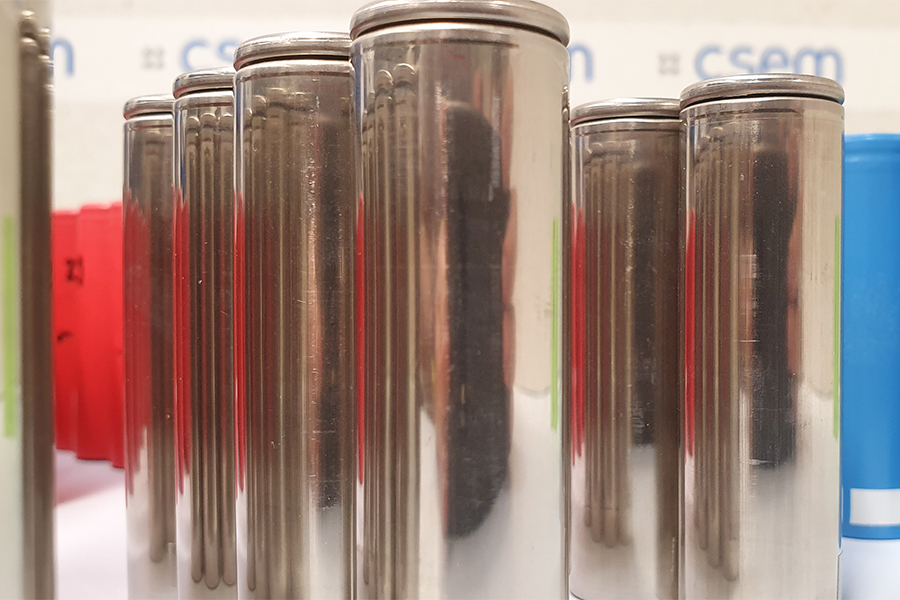A second life for lithium-ion batteries

Lithium-ion batteries consist of many individual battery cells connected in series. If one cell or the electronics no longer function, the battery is no longer functional. However, other cells may still be fit enough for "second-life" storage.
Source: CSEM
At a glance
Year after year, the share of electric vehicles in new registrations in Switzerland is increasing. In 2021, every tenth car sold was a purely battery-electric vehicle, plus plug-in hybrids. According to manufacturers, the batteries used in these vehicles have a life expectancy of at least eight years, which corresponds to a driving distance of about 160,000 kilometres. After this time, the capacity of the battery can drop below 80 per cent of the original, so that it is no longer sufficient to power a vehicle. However, for other applications, for example as home storage for solar systems, these capacities are quite sufficient. It is also possible that, in the case of a defective battery, only individual cells or the electronics no longer function. Other cells, on the other hand, still perform well. The Swiss company Libattion produces new storage units from such cells. Technically, such "second-life" storage systems work well. But are they economical?
One obstacle to the reuse of individual battery cells on a large scale is their testing. To precisely determine the state of health (SoH) of a battery cell, a full charge and discharge cycle lasting three to five hours is required - far too time-consuming to produce competitive "second-life" storage devices. The Centre Suisse d'Electronique et de Microtechnique (CSEM), together with Libattion, has therefore investigated which alternative measurement methods can be used to reliably assess the condition of battery cells within a useful period of time. The researchers tested the cells using various methods according to three indicators based on resistance, efficiency and electrochemical impedance. They then compared these indicators with the SoH value and investigated how the values correlate. Finally, they validated the results with measurements on a larger number of cells based on four different lithium-ion technologies.
All the chosen indicators showed a good correlation with the ageing state of the cells. The estimation error was in the range of 2 to 2.5 per cent. One method performed slightly worse, but showed lower deviations across different battery types. For all indicators, the measurement time is reduced by at least 70 percent compared to a 5-hour charge-discharge cycle. This means that cells suitable for a "second life" application can be found much more quickly.
No "best" method crystallised out. Depending on the requirements - accuracy of the measurement, robustness of the analysis for different battery types, time duration of the analysis or simplicity of the machine processing - different measurement methods are suitable.
Products from the project
Contact and team
Project management Claudio Brivio CSEM SA Rue Jaquet-Droz 1 2002 Neuchâtel claudio.brivio@csem.ch
Projektpartner
Libattion GmbH
Sägereistrasse 24
8152 Glattbrugg

